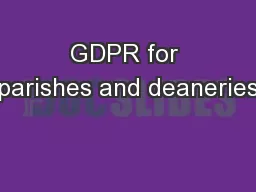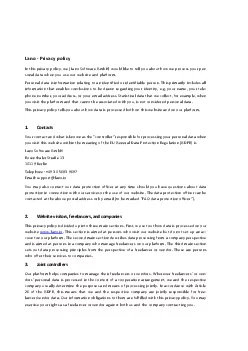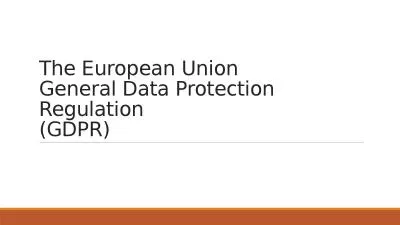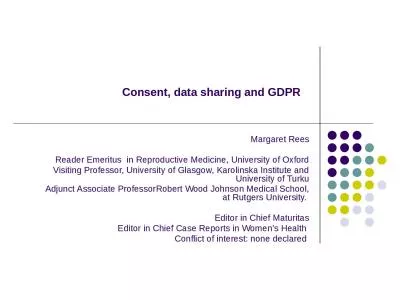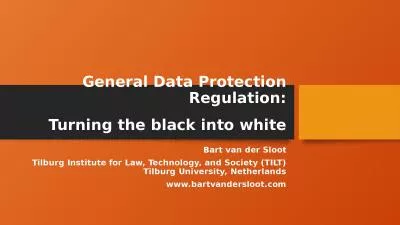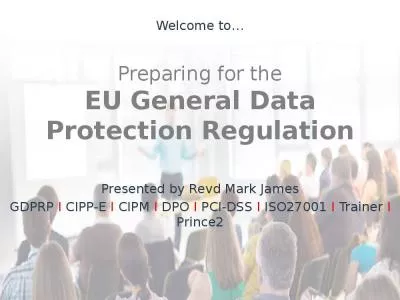PPT-GENERAL DATA PROTECTION REGULATION (GDPR)
Author : pasty-toler | Published Date : 2018-11-23
PANEL DISCUSSION ARMA New Jersey November 15 2017 1 Our Panel 2 GDPR Some Key Points William Saffady wwwsaffadycom Email wsaffadysaffadycom GDPR Background Approved
Presentation Embed Code
Download Presentation
Download Presentation The PPT/PDF document "GENERAL DATA PROTECTION REGULATION (GDPR..." is the property of its rightful owner. Permission is granted to download and print the materials on this website for personal, non-commercial use only, and to display it on your personal computer provided you do not modify the materials and that you retain all copyright notices contained in the materials. By downloading content from our website, you accept the terms of this agreement.
GENERAL DATA PROTECTION REGULATION (GDPR): Transcript
Download Rules Of Document
"GENERAL DATA PROTECTION REGULATION (GDPR)"The content belongs to its owner. You may download and print it for personal use, without modification, and keep all copyright notices. By downloading, you agree to these terms.
Related Documents





